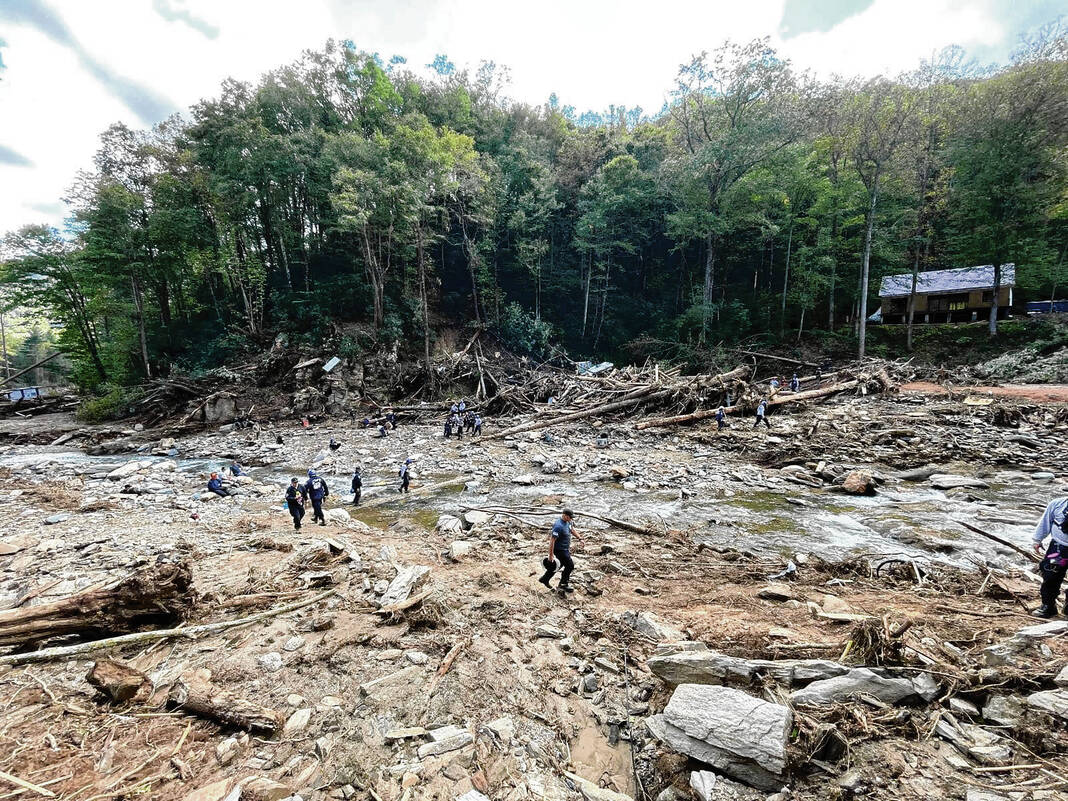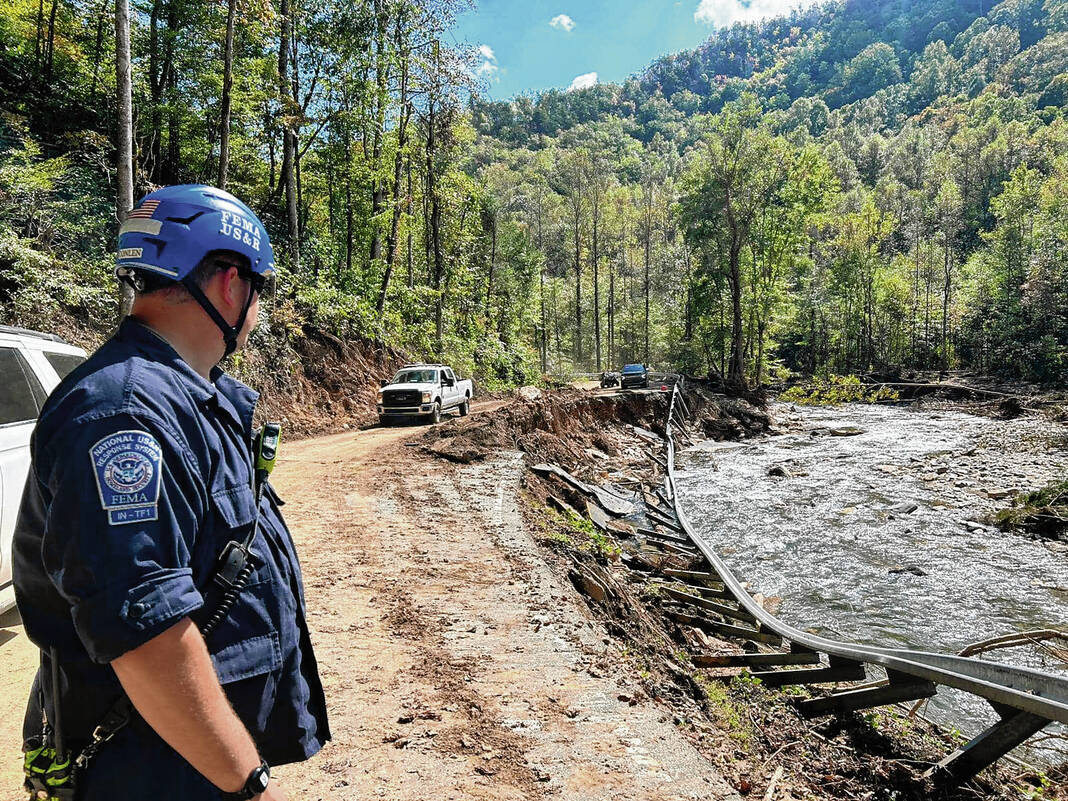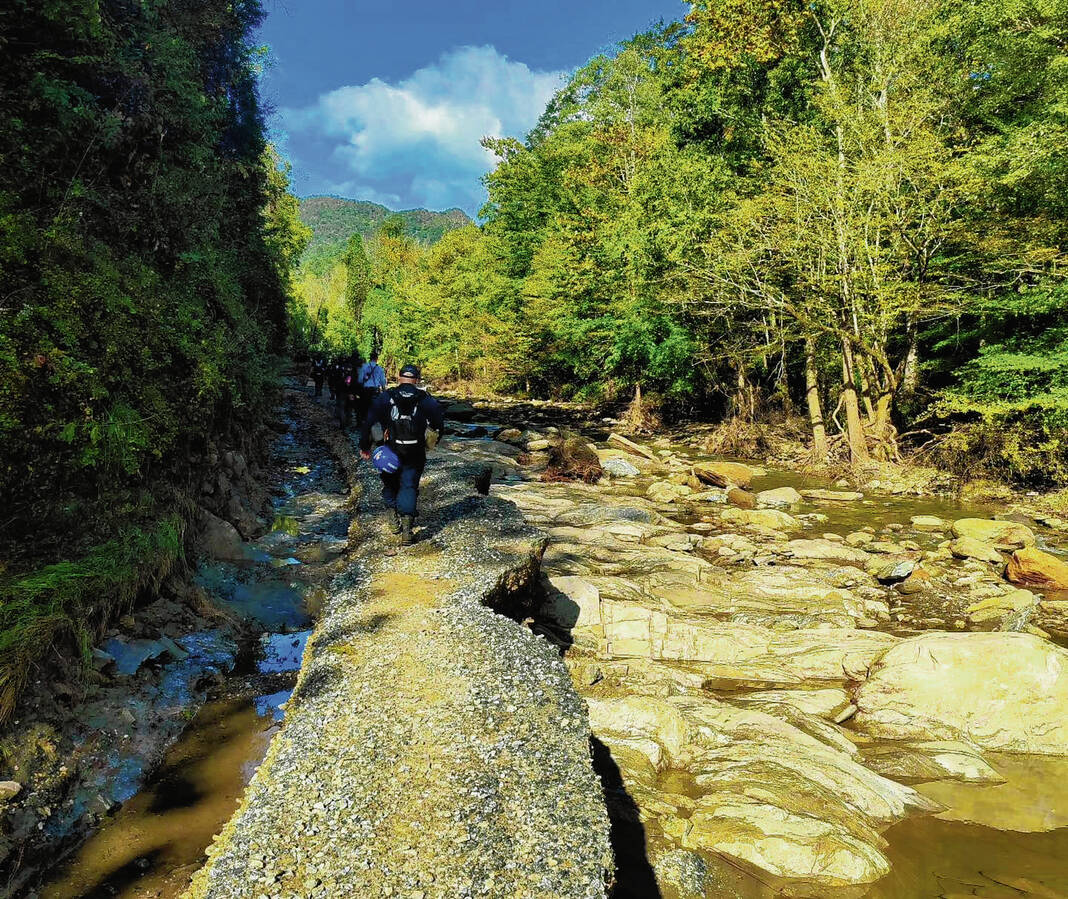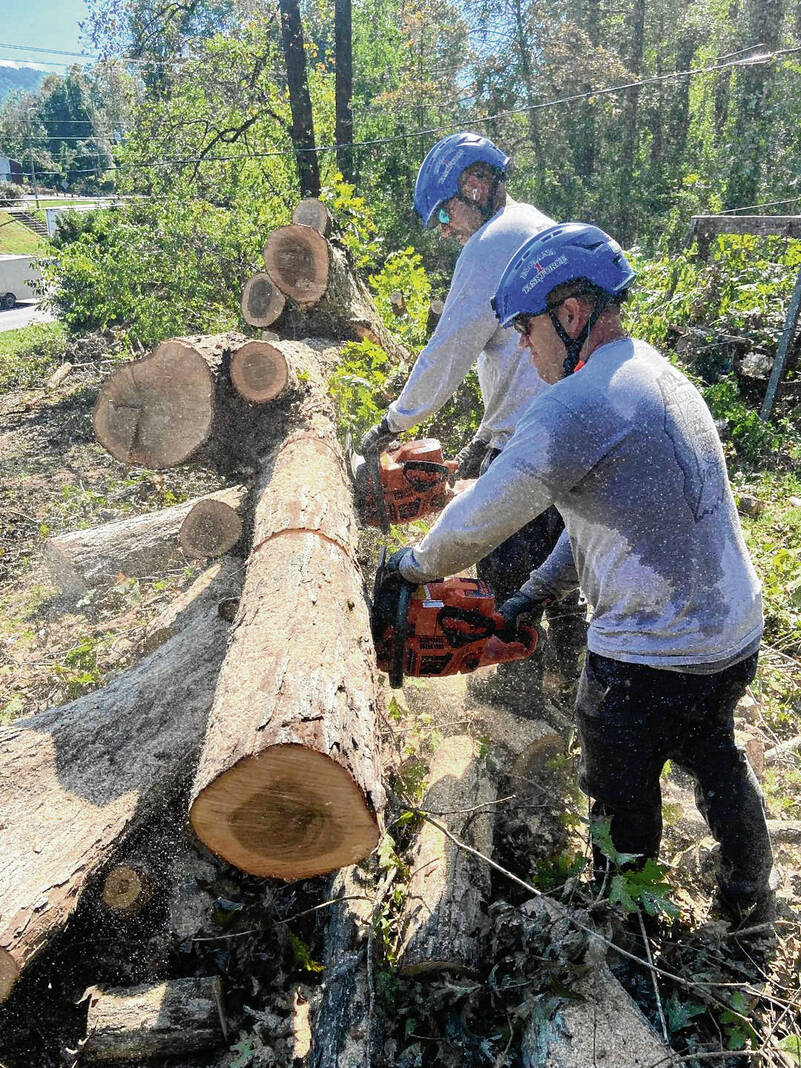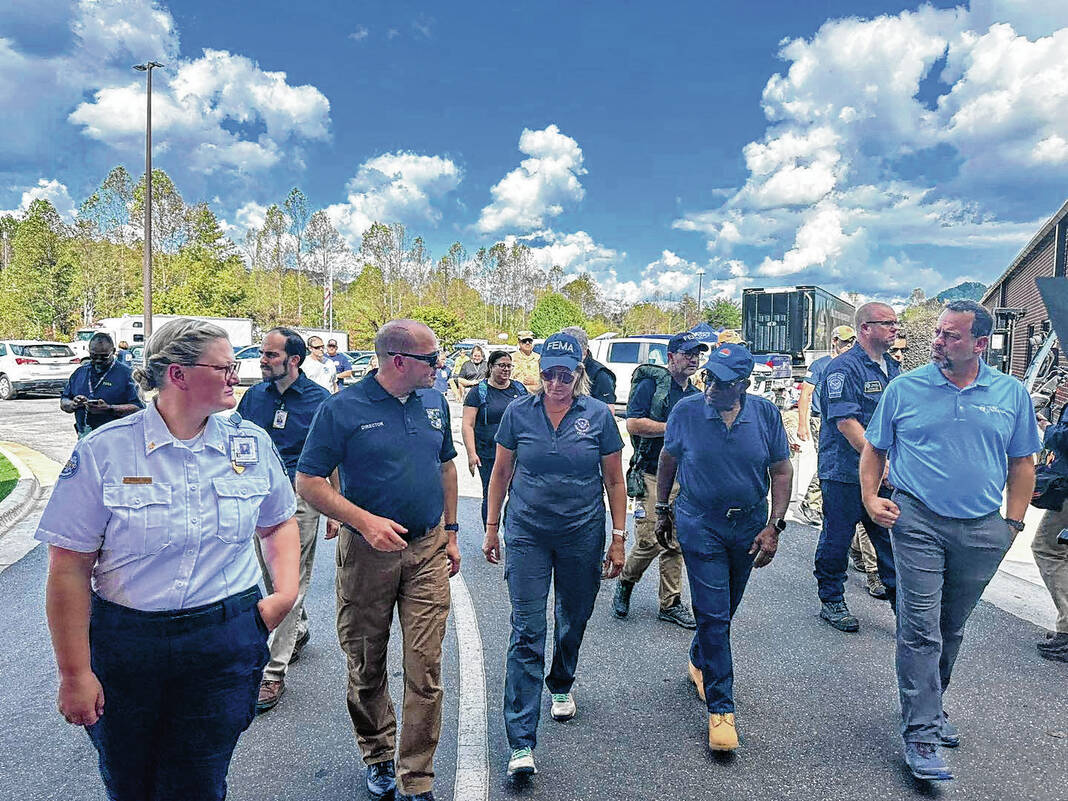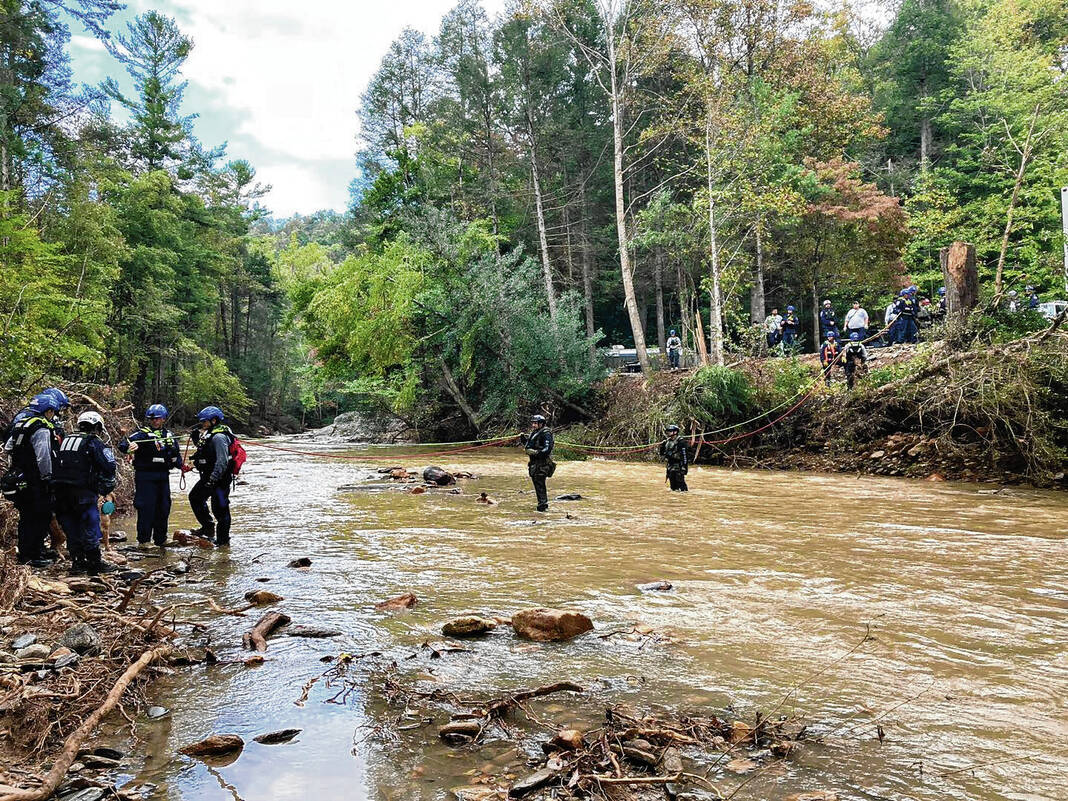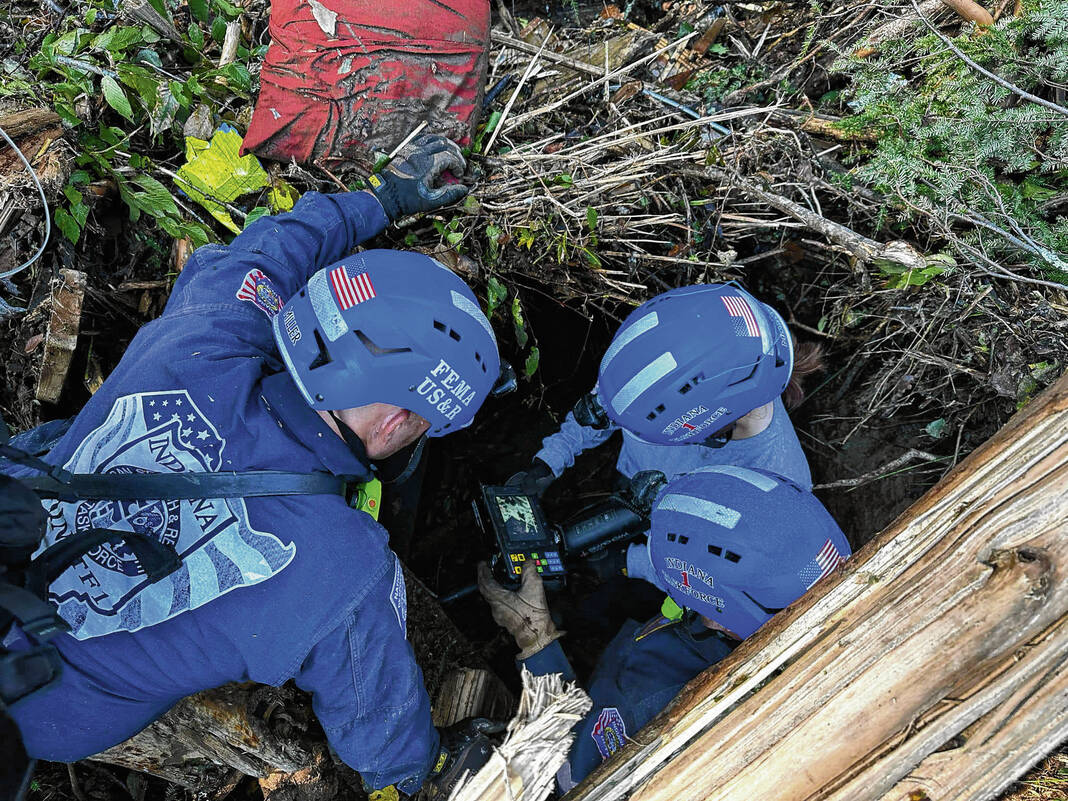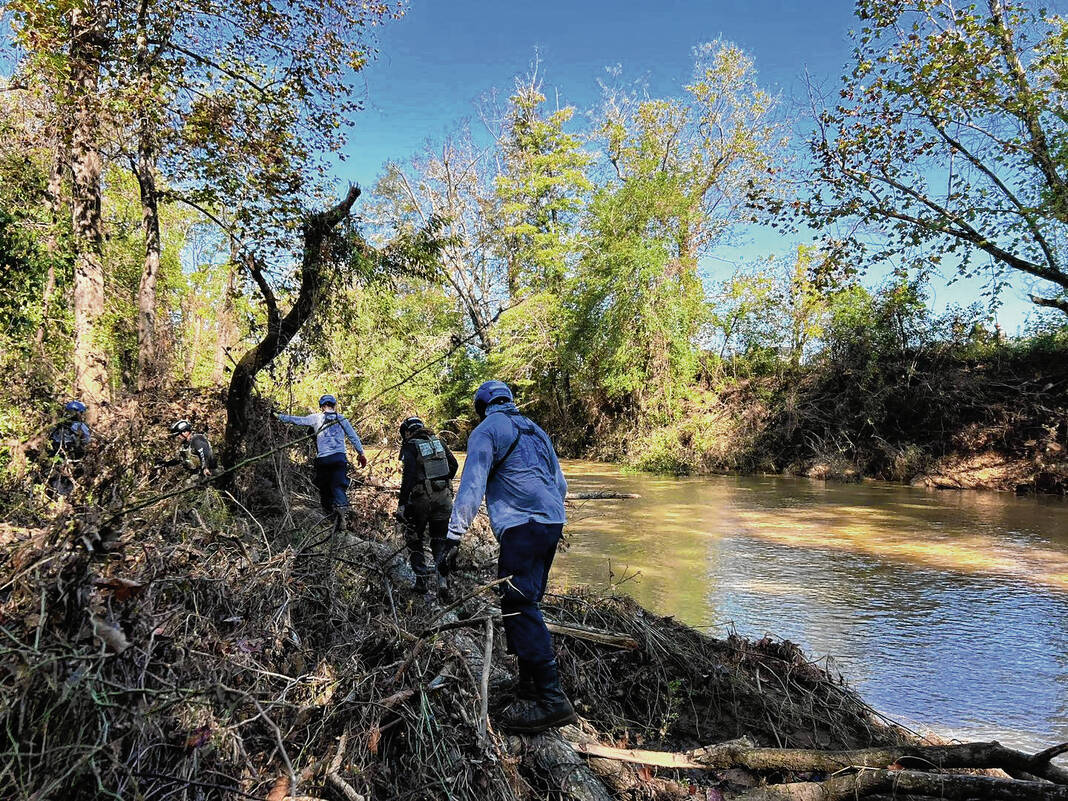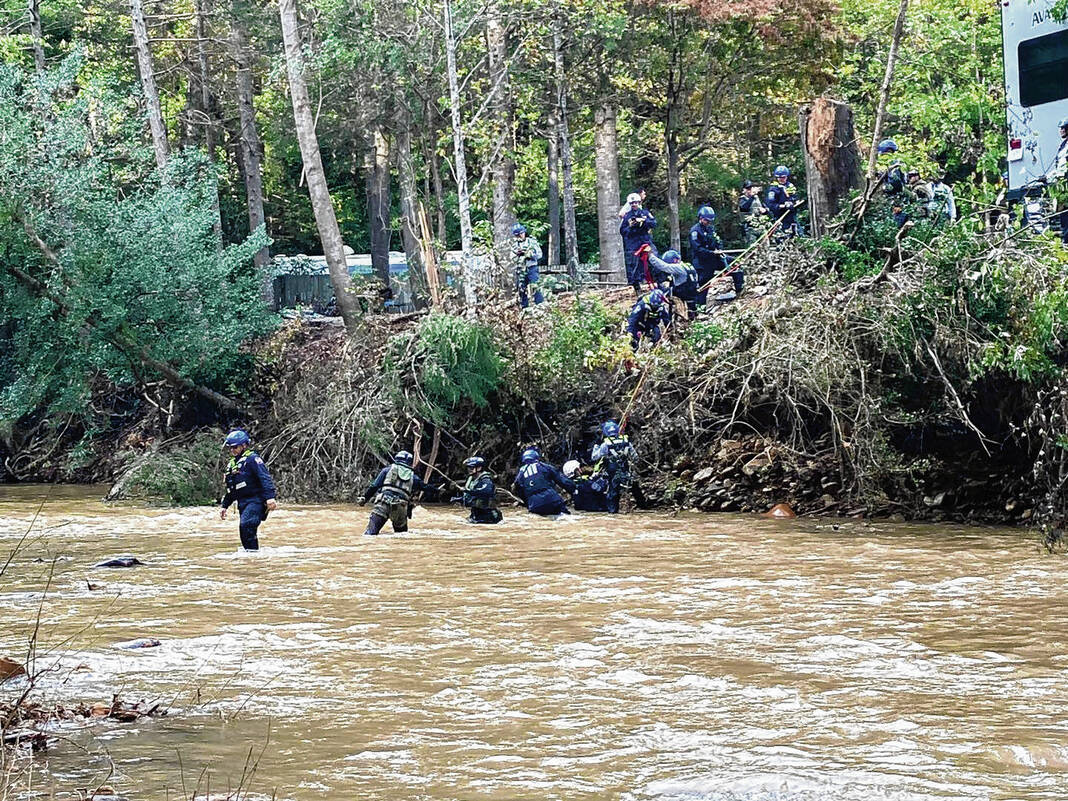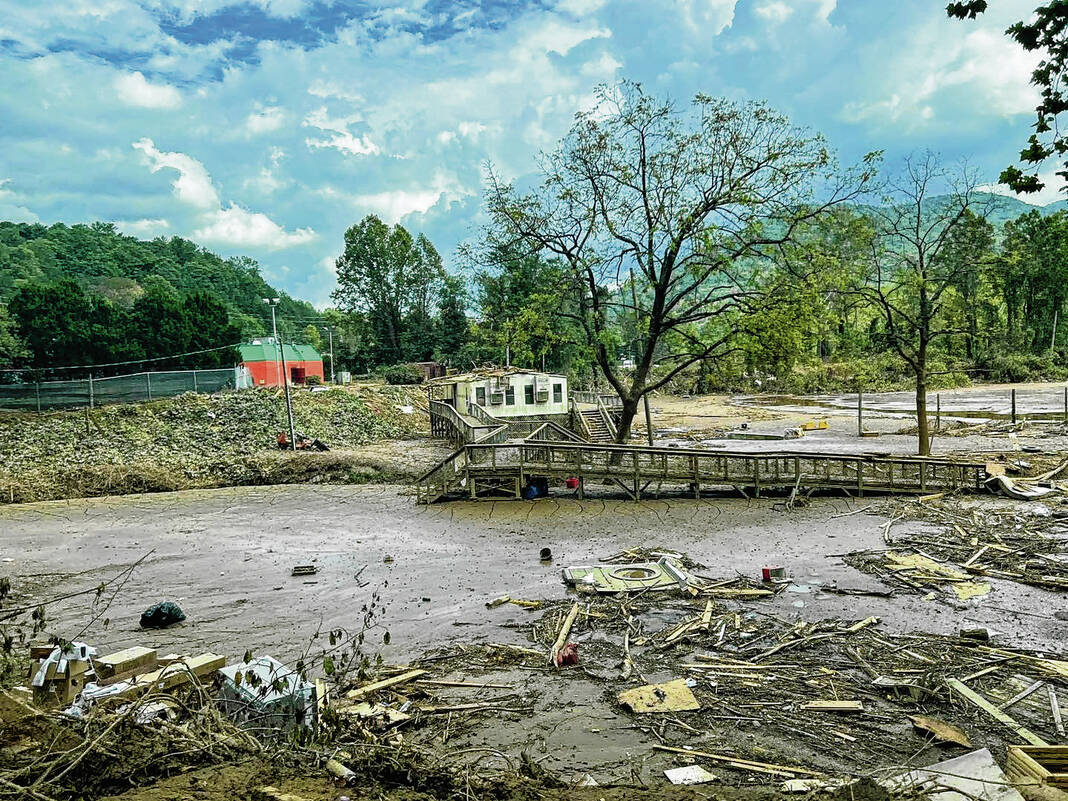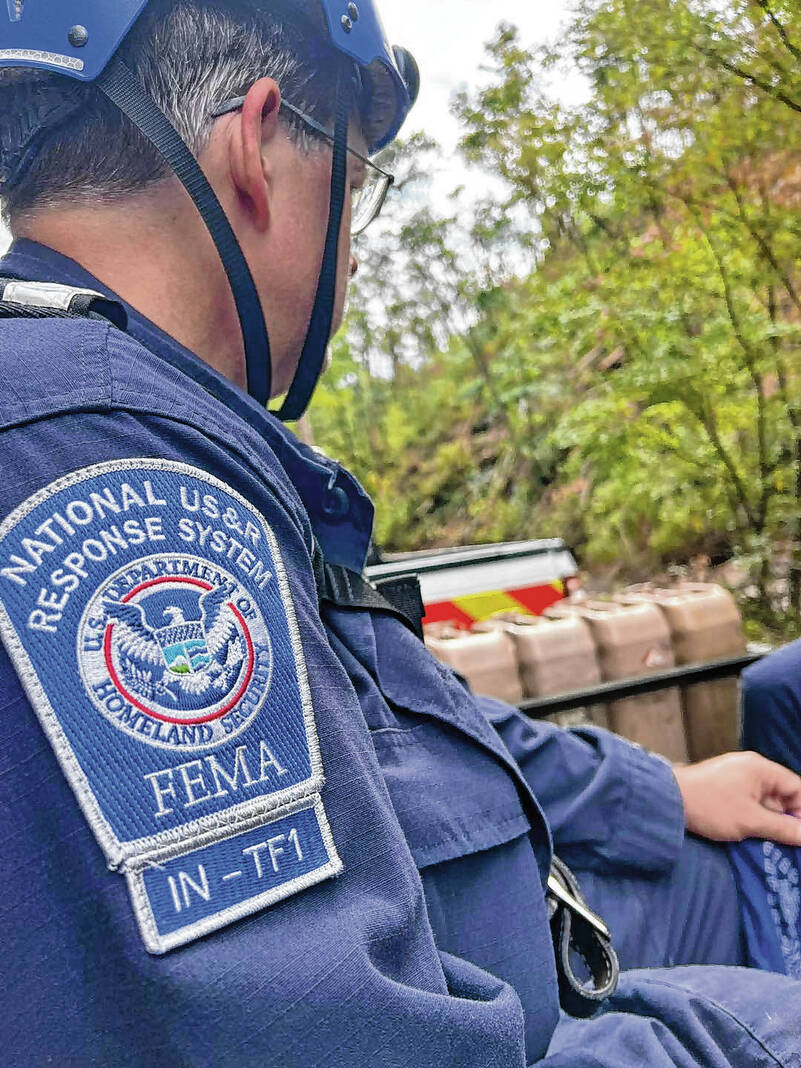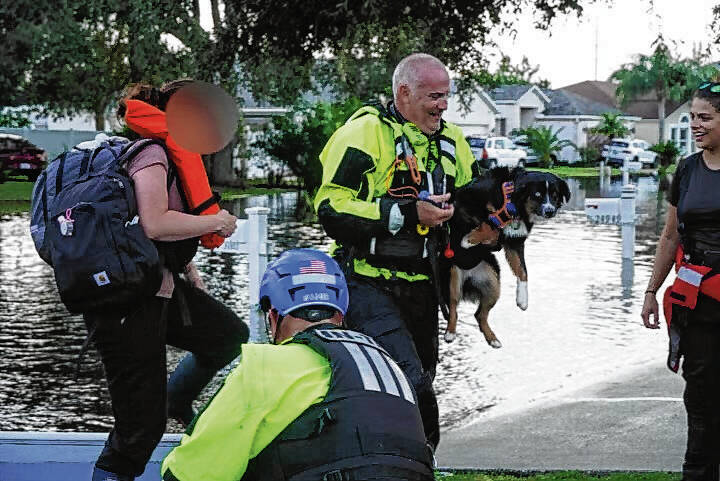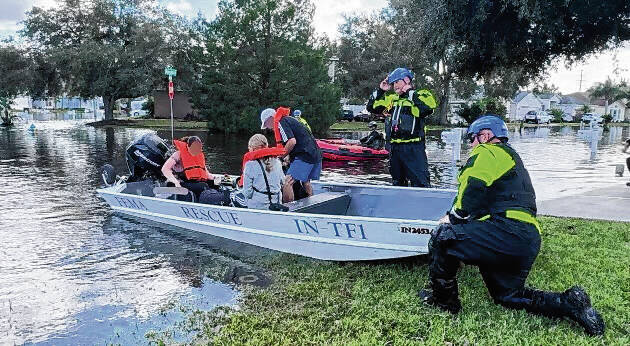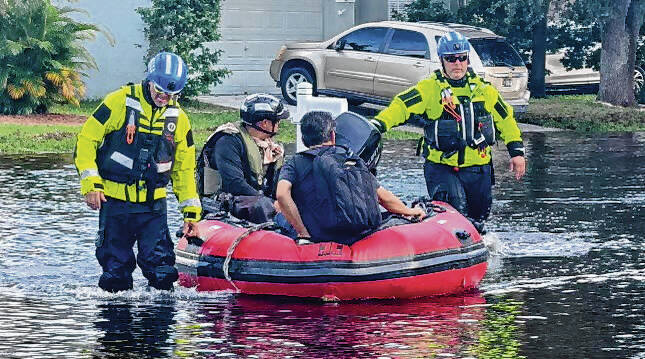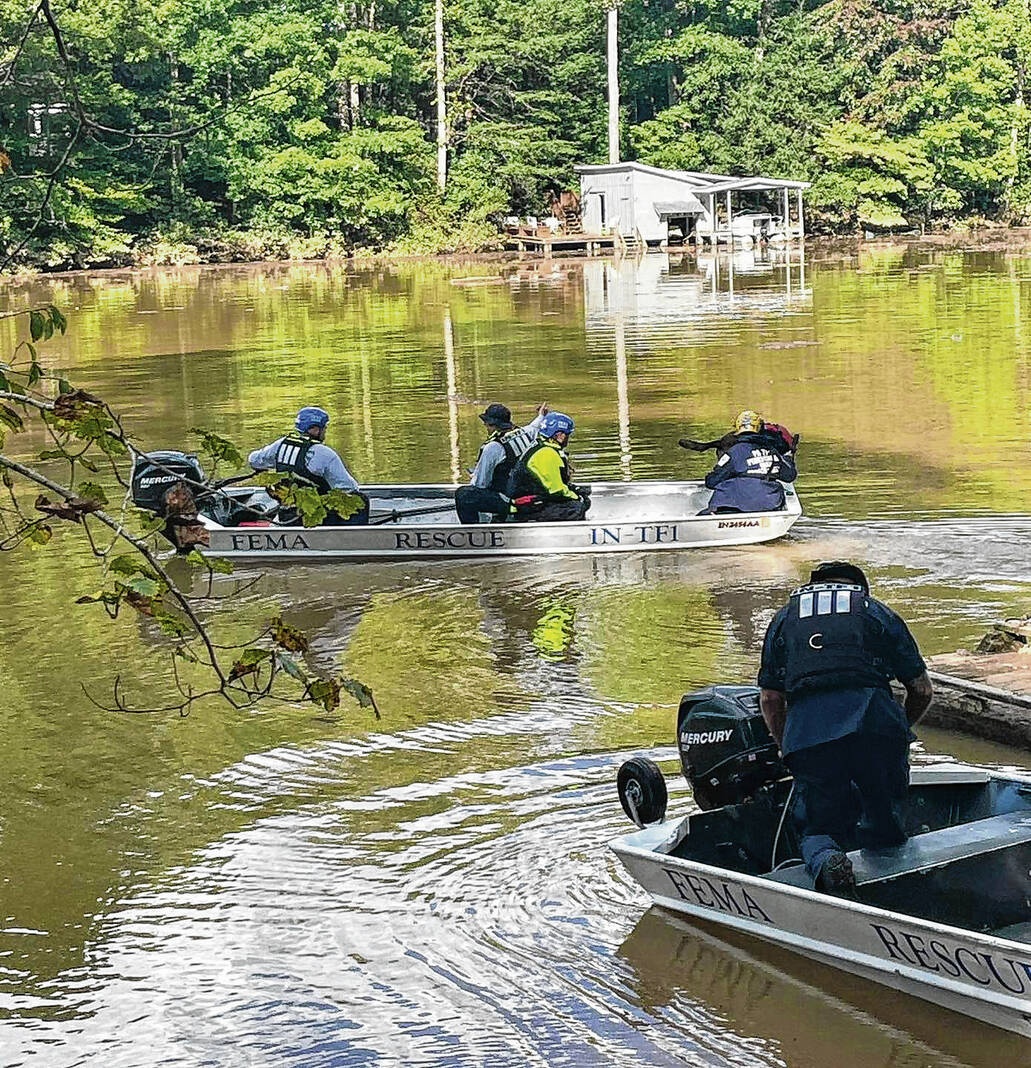The devastation was beyond words, even for those who have seen it before.
For 22 days, more than 80 members of Indiana Task Force 1 conducted search, rescue and recovery operations in Florida, western North Carolina and then Florida, again, after two devastating hurricanes brought high winds, flooding and destruction to areas of the the two states. The 22-day deployment, which took place from mid-September to mid-October, was the longest deployment in the urban search and rescue task force’s history.
Indiana Task Force 1, also known by the shorthand of IN-TF-1, is one of only a handful of Federal Emergency Management Agency-designated urban search and rescue task forces. Their mission is to conduct search, rescue and recovery operations in the aftermath of disasters, and over the years they have assisted in the response to hurricanes, tornadoes and even a building collapse.
The task force is made up of 38 different agencies, with the Indianapolis Fire Department serving as the sponsor agency. Local agencies who have frequently taken part include the Bargersville, Franklin, Greenwood and White River Fire Departments. About 20% of the 217-member group is made up of civilians.
Responding to Helene
Before they officially got word, task force leaders knew they would potentially deploy to Florida as the state was requesting help from the federal government ahead of Hurricane Helene, said Jay Settergren, IN-TF-1’s training manager and a battalion chief for IFD. Settergren was the task force leader for the latest deployment.
As part of this deployment, four local first responders were sent to Florida —Lt. Joe Kipfer, a rescue specialist from the Bargersville Community Fire Department; Capt. Daniel McElyea, a rescue specialist from the Franklin Fire Department; and firefighter Michael Combs and paramedic Chelsea Spina, a communications specialist and a medical specialist, respectively, from the White River Township Fire Department.
Through FEMA, IN-TF-1 was asked to pre-position in Pensacola, Florida. As Helene came through the area, they were put to work immediately for search and rescue, being re positioned to Tallahassee, Settergren said.
IN-TF-1 did several operations, being sent to a couple smaller counties before being moved to the barrier islands in the Tampa-St. Petersburg areas, Settergren said. They worked to search those areas for a while before being moved to western North Carolina, which suffered extremely devastating flooding from the storm.
At least 214 deaths have been reported across multiple states due to Helene, including 92 in North Carolina.
The task force was assigned to McDowell County, a county of nearly 45,000 people. They spent eight days there taking part in search and recovery operations, Settergren said.
The pictures of the devastation don’t do it justice, he said.
“To be able to see it in person is much more impactful,” Settergren said.” You take into account the total devastation, things that you can’t see from a picture — you don’t get the sense of smell, you don’t get the sense of heartache, you don’t get the sense of loss.”
For Lt. Joe Kipfer of Bargersville Fire, seeing the devastation was “mind-boggling” — especially in North Carolina. Kipfer has been on the task force for two years, but this was his first deployment.
“I knew it would be bad when we got there, but I didn’t expect it to be as bad as it was,” Kipfer said. “That’s probably what surprised me the most — just the raw power of the water that moved through that area.”
Milton rapidly forms
While still assisting in North Carolina, a second storm developed — Hurricane Milton, which had an eye on the same areas of Florida they had two weeks earlier. The storm intensified quickly, hitting Category 5 status multiple times.
The task force was redeployed to Georgia ahead of Milton’s landfall in Florida, while teams from other states stayed in Georgia. After landfall, they were back again in the Tampa Bay area, Settergren said.
While in Florida for a second time, IN-TF-1 worked with other FEMA task forces and local search teams to search the same areas they had before. This time there was more local flooding after Milton came through, he said.
Settergren initially didn’t see the flooding for the first few days, but by the fourth day, the water rose by 4 feet in a lot of areas. They continued to do evacuations and searches for a few days before being released on Oct. 12, he said.
Milton caused widespread flooding and wind damage to east central Florida, including spawning a tornado outbreak in the state before it made landfall. At least 17 people died around the Gulf of Mexico from the storm.
For the second deployment, more task force members were deployed, including personnel from the Greenwood Fire Department and Bargersville Fire Chief Mike Pruitt, a spokesperson for the group. Pruitt was part of the support team that helped managed all of the FEMA urban search and rescue teams, filling the role of information officer to share information with the media and documenting the work of the task force, he said.
This is not the first time Pruitt has been deployed to Florida as part of IN-TF-1.
“Unfortunately, many of our deployments to that state, sort of, are the same,” Pruitt said. “We get a lot of coastal damage, where there’s been a flood surge and people are displaced, structures damaged, and then that kind of transitions into inland flooding.”
One day while in Florida, IN-TF-1 worked with the Florida National Guard and the state’s Fish and Wildlife agency to assist in searching and rescue operations. They were evacuating people by boat from high waters, and in one day they evacuated about 350 people, Pruitt said.
Compared to past storms, Pruitt said the efforts in Florida didn’t need to be as much because Milton came in weaker than past storms, like 2022’s Hurricane Ian. The evacuation routes were also “solid,” with many leaving the areas ahead of time, he said.
“Basically all we dealt with after the hurricane passed through was power outages,” Pruitt said. “That was obviously an issue, along with the flooding and some structural issues going on with structural damage. But a lot of people did evacuate, and that was good.”
Florida is also a very “resource heavy” state, and does a good job of preparing for these types of storms ahead of time, he said.
‘Mentally and physically draining’
A 27-year member of the task force, Settergren has been to several disaster areas. Doing a 22-day deployment is both “mentally and physically” draining for all of those involved, but becomes more so when all of the search areas covered and miles driven are added in, he said.
“The miles that we drove, basically from the time we left to the time we get back, was over 4500 miles, which is extensive compared to what we normally do — well over double,” Settergren said.
Some days, task force members were searching for 10-12 hours a day before driving back to their base camp to rest. There was also a lot of paperwork to be filled out as well, which helps ensure they achieve the search goals, he said.
“It’s a big challenge to try to balance all that, and as a task force leader, I have to try to make sure that we are feeding everybody, we’re resting them appropriately,” he said. “… Some days it was 90 degrees in the Florida searches, the times we were there, and then you go up in the mountains in North Carolina, and some mornings it was 35 or 40 [degrees]. So big, big changes in those types of climate.”
Mental health was also an important task, especially for the duration of these types of incidents. IN-TF-1 has peer support personnel with them to help keep an eye on everyone and to make sure that if they had anybody who was struggling or having an issue, they would get them the resources and support they needed. This includes after they return as well, Settergren said.
There was a bit more of challenge in the responses to Helene and Milton. Search and rescue resources were shifted from Florida to North Carolina after Helene, but when Milton came, those resources had to again be shifted to Florida, Pruitt said.
“There was a lot of activity going on trying to provide resources across that eastern section of the country,” he said.
The people of North Carolina were extremely grateful for the help from the task force, Kipfer said.
“It was a really good experience to be able to help people and just see something totally different at a national level, that’s for sure,” he said.
Trying to help
Working in the communities and seeing the devastation — the complete loss of entire homes and families due to mudslides and flooding in the case of North Carolina — is very difficult to see. It’s hard on the residents and the task force, Settergren said.
But being able to return someone to their family in some cases is huge, he said.
“If we’re not able to find somebody alive and rescue them, the next best thing is to return somebody to their family that has been missing, or that was deceased in the incident, it is good for us as well. It helps makes us feel like we’re at least helping them be able to have some closure,” Settergren said.
This applies in the case of any incident the task force responds to, Settergren said.
“It doesn’t matter on any of these types of deployments I’ve been on. It’s very similar,” he said. “You’re obviously there to help, and if we can do that, in whatever capacity that is, that’s our goal. That’s what we want to do, is be able to be there to help those communities.”
Settergren says when a lot of people hear about IN-TF-1, they don’t really know a lot about them. They train upward of 10,000 hours a year as a team with members volunteering from participating agencies or as civilians, he said.
In the case of the civilians, their employers either allow them vacation time or time without pay to take part in the task force, Settergren said.
“We want to make sure we thank all those partners and those civilians that basically volunteer a lot of time,” he said. “… So we — myself and our program manager Tom Neal — want to make sure we thank our membership and our participating agencies for allowing those people to be part of the team.”
HOW TO HELP
Here’s a look at some ways Hoosiers can help those affected by Hurricanes Helene and Milton:
American Red Cross
Making financial donations, making an appointment to give blood or platelets, or signing up to become a volunteer are three ways the Red Cross could be helped. To do so, go to redcross.org or call 1-800-RED CROSS.
United Way of Florida
Financial donations can be made to the United Way of Florida’sDisaster Recovery Fund at uwof.org/disaster-recovery-fund. The webpage also contains a list of county-level recovery funds.
United Way of North Carolina
Financial donations can be made to the United Way of North Carolina’s UWHelpsNC Helene Recovery fund at unitedwaync.org.


